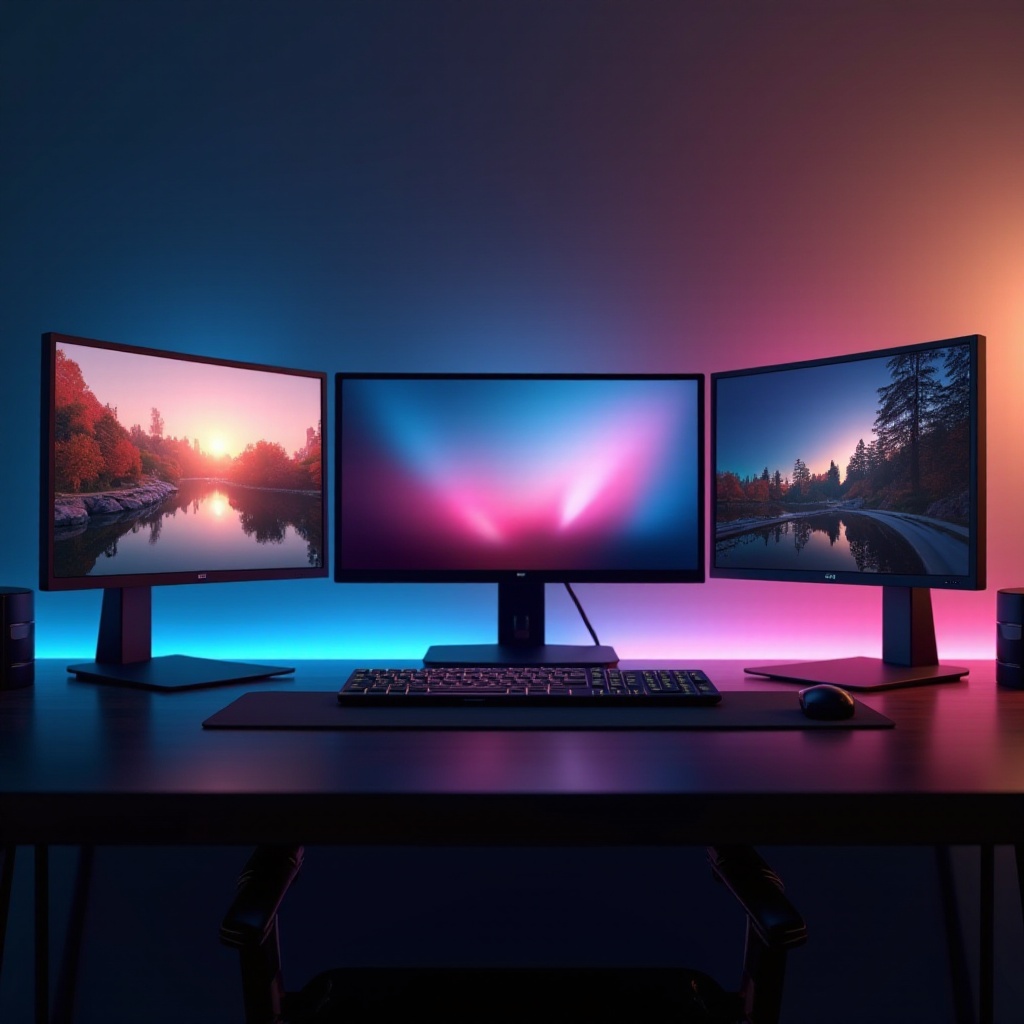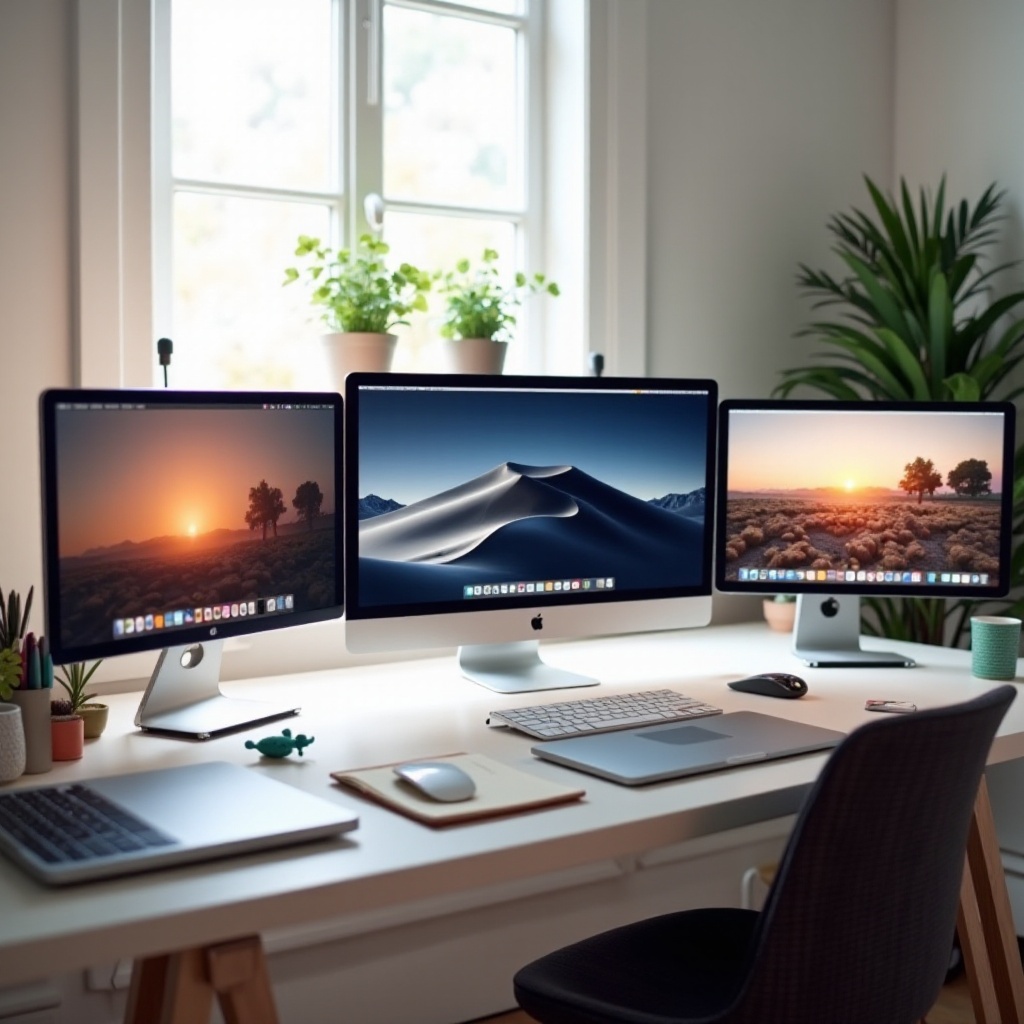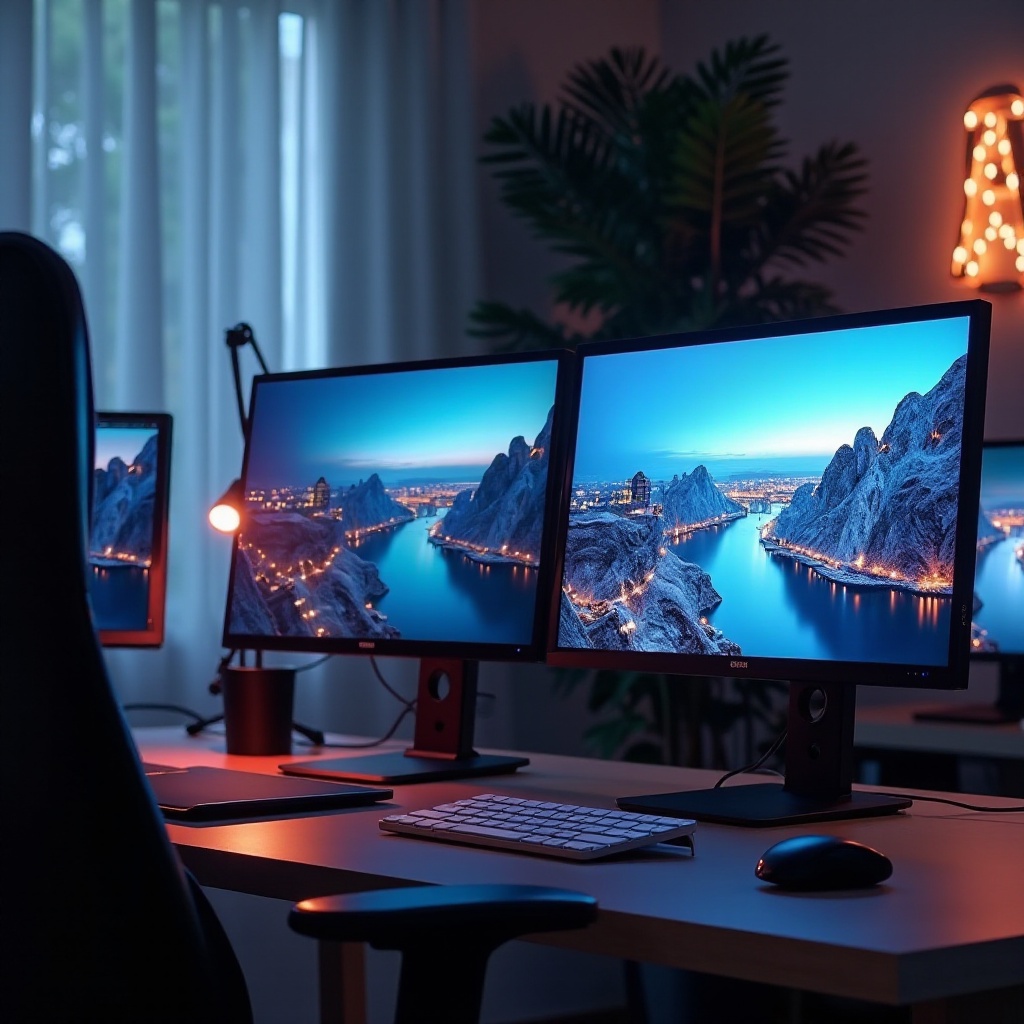Introduction
Transforming your digital workspace can enhance productivity and boost mood, and personalizing your monitor display is an excellent starting point. With the prevalence of multi-monitor setups, users increasingly desire ways to make each screen unique. A popular customization choice is setting different wallpapers for each monitor. This not only adds a personal flair but also aids in organizing tasks across screens effectively. This comprehensive guide will navigate you through the process on Windows, macOS, and Linux, ensuring a smooth experience on any platform.

Understanding Multi-Monitor Setups
As technology progresses, multi-monitor configurations have become widely accessible, benefiting even casual users. They offer expanded screens, improved productivity, and seamless multitasking. Whether you’re a designer needing separate displays for various tools or a programmer wanting an isolated environment for coding and testing, multi-monitor setups are versatile. Grasping the complexities of your system’s multi-monitor handling is crucial for effective customization.
Why Set Different Wallpapers?
The choice to set different wallpapers isn’t merely for aesthetics; it’s functional too. Varied images help you identify applications on each screen quickly, aiding workflow organization. For example, a calming nature scene on your primary monitor could help focus, while a vibrant cityscape on the secondary screen keeps energy levels high. Such visual diversity avoids monotony and creates a more stimulating workspace.
Setting Different Wallpapers on Windows
Using Built-in Windows Settings
Windows offers a straightforward method to assign different wallpapers to each monitor via built-in settings:
- Right-click on the desktop and choose ‘Personalize.
- Navigate to the ‘Background’ section.
- Under ‘Choose your picture,’ right-click your desired wallpaper. Select ‘Set for monitor 1,’ ‘Set for monitor 2,’ etc., based on your preference.
- Repeat for each monitor.
This simple process requires no additional software, making it highly accessible.
Leveraging Third-Party Applications
For those desiring more advanced customization, third-party applications enhance functionalities:
- Programs like ‘DisplayFusion’ and ‘UltraMon’ offer extensive options for customizing wallpapers, managing screensavers, and even adding taskbars.
- These applications provide options like slideshow across monitors and preset templates, catering to home and professional needs.
Opt for third-party tools if detailed personalization and enhanced features are desired.
Setting Different Wallpapers on macOS
System Preferences Method
Setting wallpapers on macOS via system preferences is user-friendly:
- Click the Apple icon and pick ‘System Preferences.
- Click ‘Desktop & Screen Saver.
- Select your desired image for the first monitor.
- Drag the chosen image from the left to the monitor on the right.
- Repeat for the other monitor(s), selecting unique images.
macOS’s built-in option is swift and harmonizes with Apple’s ecosystem.
Third-Party Application Options
macOS supports external applications for enhanced customization:
- Tools like ‘Mosaic’ and ‘Multimon Wallpaper’ expand default capabilities, offering features like distinct wallpapers for each ‘Space’ and dynamic wallpaper support.
- These applications boast intuitive interfaces and excel at creating cohesive looks across multiple monitors.

Advanced Customization on Linux
Linux users enjoy varied desktop environments like GNOME, KDE, or Xfce, each equipped with customized multi-monitor management:
- In GNOME, utilize ‘Gnome Tweaks.’ Access ‘Background’ and set distinct images per display.
- KDE users should right-click the desktop, choose ‘Configure Desktop and Wallpaper,’ and select different images for each screen.
- Alternatively, ‘HydraPaper’ is a flatpak application that supports multiple monitors and offers a user-friendly customization approach.
Linux’s open-source framework allows deep customization, catering to novices and experts alike.
Troubleshooting Common Issues
Encountering issues while setting different wallpapers may occur, such as:
- New wallpapers not applying: Consider software updates or restarting your device.
- Image distortion: Ensure image resolution meets or exceeds monitor specifications.
- Missing options: Confirm that your remote management tools accommodate multi-monitor setups.
Most issues relate to system settings; therefore, verifying these settings is the first recommended action.

Tips for Choosing the Perfect Wallpapers
Selecting a suitable wallpaper is both artistic and strategic:
- Match each image’s resolution to your monitor to prevent pixelation.
- Choose images that promote productivity or relaxation.
- Use cohesive themes or color palettes across multi-monitor setups.
Thoughtful selections can aesthetically harmonize your workspace and enhance user experience.
Conclusion
Customizing each monitor’s wallpaper uniquely injects creativity into your multi-monitor setup. Regardless of using Windows, macOS, or Linux, each platform offers robust approaches to achieve this customization. With creativity, a few clicks, and potential third-party app assistance, your work environment can be transformed.
Frequently Asked Questions
How do I set a different wallpaper for each monitor on Windows 11?
In Windows 11, right-click the desktop, select ‘Personalize,’ open ‘Background,’ and choose distinct wallpapers by right-clicking images and selecting the specific monitor.
Can I use different wallpapers on a laptop with an external monitor?
Yes, laptops with external monitors can have different wallpapers for each screen using the same methods applicable to your operating system.
Are there apps available to manage wallpapers across multiple monitors?
Yes, multiple applications such as DisplayFusion, UltraMon, and Mosaic provide advanced customization options for multi-monitor setups, including diverse wallpapers.
